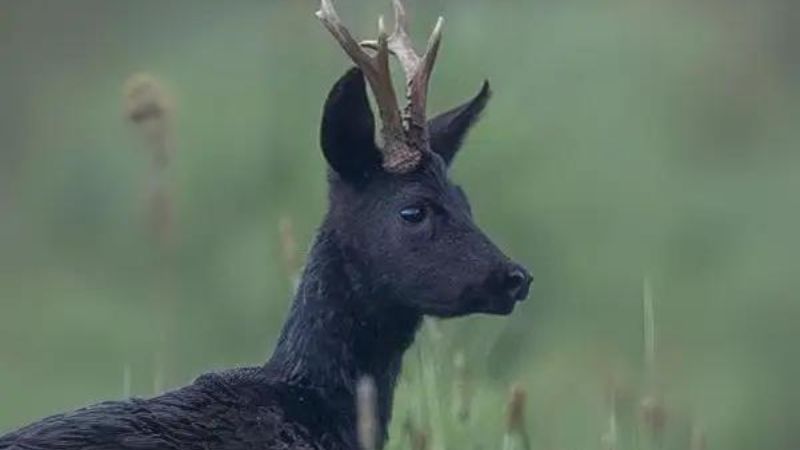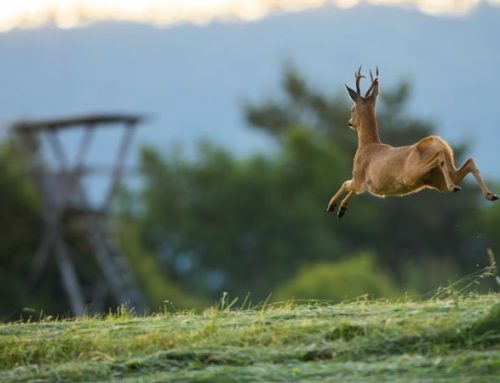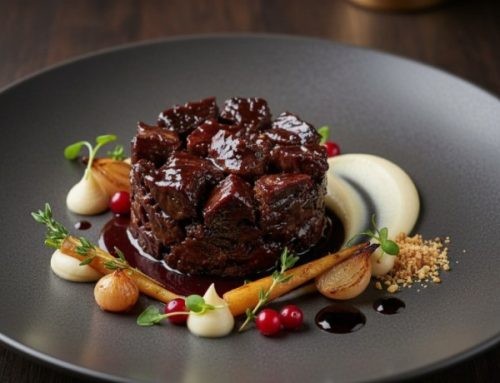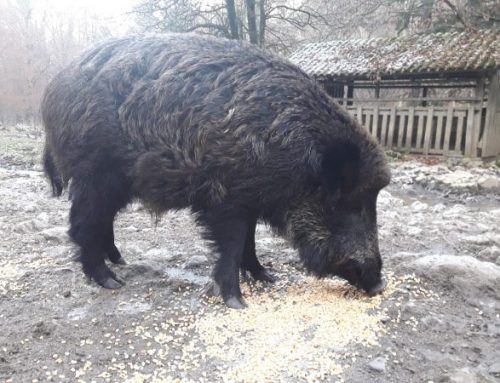In Germany, there is a particular variety of roe deer characterized by a black coat, known as the melanistic roe deer.
This animal primarily inhabits the forested regions of central and southern Germany, where the dense undergrowth and wooded areas provide an ideal habitat.
The melanistic roe deer prefers mixed broadleaf and coniferous forests, where it can find both shelter and abundant food. These forests are often rich in oaks, beeches, pines, and spruces, creating a diverse environment suited to the roe deer’s needs. The animal is usually active at dawn and dusk, when it emerges to graze on grasses, buds, leaves, and shoots. During the day, it tends to rest in denser and safer parts of the forest.
The black color of this roe deer’s coat is due to a genetic condition known as melanism, which causes an excess production of melanin pigment in the skin and fur. This color variation is rare and gives the animal a distinctive appearance. Melanism can offer some camouflage advantages, especially in dense and shady forests, but it can also make the animal more visible in open areas.
Hunting melanistic roe deer in Germany follows strict regulations and hunting seasons established to ensure the conservation of the species. Typically, the hunting season for roe deer takes place in the fall and winter, when the deer are easier to spot due to the shedding of leaves.
How Melanistic Roe Deer Hunting is Conducted
Stalking (Hunting from a Stand): This technique involves patiently waiting in observation towers or hides near deer trails or feeding areas. Hunters use binoculars to spot roe deer from a distance and wait for the right moment to take a precise shot.
Driven Hunt: This technique involves a group of hunters who drive the roe deer towards a shooting line. This method requires careful coordination among hunters and can be less selective compared to stalking.
Spot and Stalk: This involves walking slowly and carefully through the forest, trying to spot the roe deer while they graze or rest. This technique requires great skill and knowledge of the terrain.
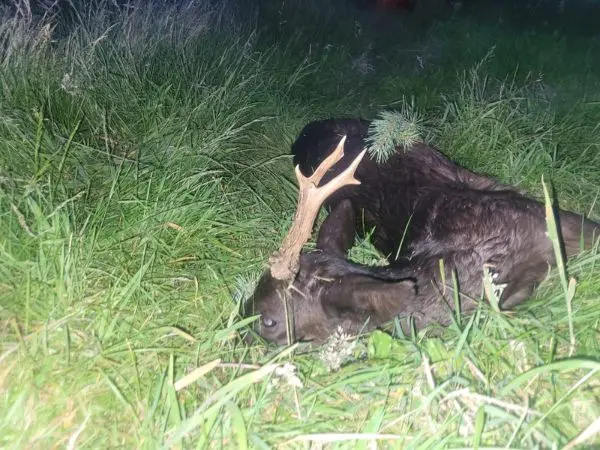
Conservation and Ethics
Hunting melanistic roe deer, like hunting any other species, must be conducted ethically and sustainably. It is essential to adhere to local laws and quotas to ensure that roe deer populations remain stable. Additionally, selecting the right animals to hunt is crucial for maintaining a healthy and genetically diverse population.
In conclusion, the melanistic roe deer represents a fascinating and rare variation of the common European roe deer. Regulated and respectful hunting practices offer hunters the opportunity to engage with German nature and contribute to sustainable wildlife management.
The Tradition of Hunting in Germany
Italian hunters traditionally do not consider Germany a primary destination for their hunting expeditions, but the country offers a wealth of wildlife both in number and species. Hunting in Germany is deeply rooted in the country’s culture and traditions, with a history stretching back centuries. Hunting is not only viewed as a recreational activity but also as an important responsibility for the management and conservation of wildlife and ecosystems. German hunters are often very respectful of nature and follow strict regulations and traditions to ensure sustainable and ethical hunting practices.
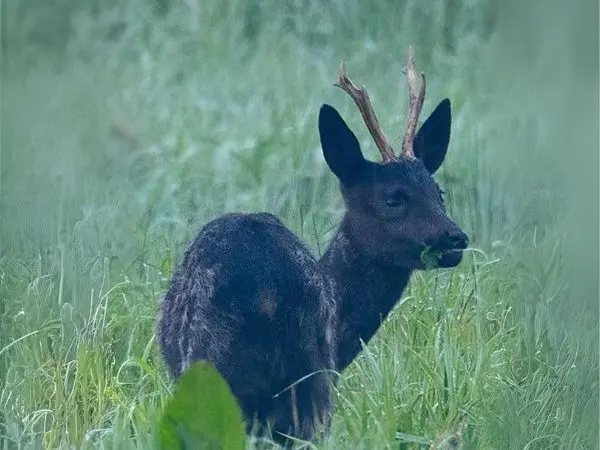
Regions Noted for Hunting
In Germany, several regions are particularly renowned for hunting, each with its own specific features and types of game. Here are some of the main regions:
Bavaria (Bayern): This southern region is famous for its extensive forests and the Bavarian Alps, which provide ideal habitats for deer, roe deer, wild boar, and chamois. The Bavarian forests are also known for bird hunting, including pheasants and woodcocks.
Rhineland-Palatinate (Rheinland-Pfalz): Characterized by broadleaf and coniferous forests, this region is rich in roe deer, deer, and wild boar. Hunting in Rhineland-Palatinate is very popular and well-regulated.
Brandenburg: Located in the northeast, this region offers extensive plains and forests, ideal for hunting deer, roe deer, wild boar, and hares. It is also an excellent area for waterfowl hunting in the wetlands.
Lower Saxony (Niedersachsen): With its vast wooded areas and plains, this region is a paradise for hunters of wild boar, deer, and roe deer. The hunting reserves in Lower Saxony are highly regarded for their sustainable management practices.
Rites and Traditions of German Hunters
Hunting in Germany is accompanied by numerous rites and traditions that transform the practice into a significant social and cultural ritual. Here are some of the most notable elements:
Hunting License (Jagdschein): To hunt legally in Germany, one must obtain a hunting license, which requires completing a rigorous training course and passing an examination. This course covers wildlife knowledge, hunting techniques, safety, and hunting laws.
Hunter’s Salute (Jägerschlag): A traditional ceremony marking the initiation of new hunters. During this ceremony, new hunters are officially welcomed into the hunting community and receive an oak branch as a symbol of their new status.
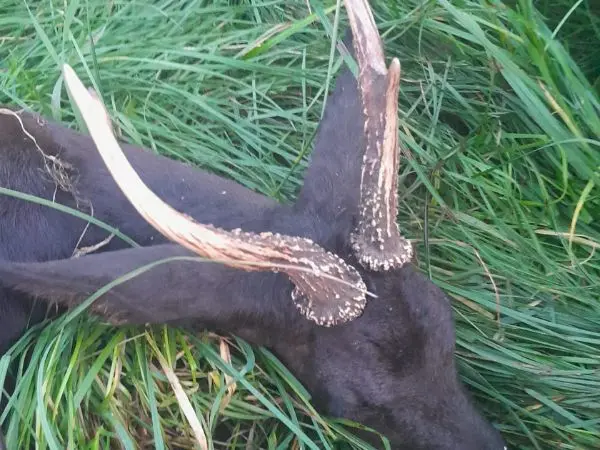
Sign of Honor (Bruchzeichen): After a successful hunt, German hunters follow a ritual where a branch or leaf is placed in the animal’s mouth as a mark of respect. The twig symbolizes the animal’s last meal on its journey to the afterlife. Additionally, a branch is broken and placed on the hat of the hunter who made the kill, celebrating the success of the hunt. The gamekeeper greets the hunter with “Weidmannsheil,” to which the hunter responds with “Weidmannsdanke” in gratitude.
Driven Hunts (Treibjagd): A traditional form of collective hunting where hunters, positioned in a line, move through the terrain pushing game towards shooters stationed at various points. This method is particularly used for hunting wild boar and deer.
Hunter’s Dinner (Jägerabend): At the end of a hunting day, it is customary to gather for a dinner celebrating the day’s hunt. This meal is a time for camaraderie and sharing, where hunters recount their experiences and strengthen bonds within the community.
Hunting in Germany is much more than just a sport; it is a tradition rich in history, culture, and respect for nature. The strict regulations and traditional rites reflect the importance of a sustainable and ethical approach to hunting, ensuring the conservation of wildlife and the perpetuation of hunting traditions for future generations. The hunting regions offer breathtaking landscapes and a variety of game, making each hunting experience unique and profoundly meaningful.

